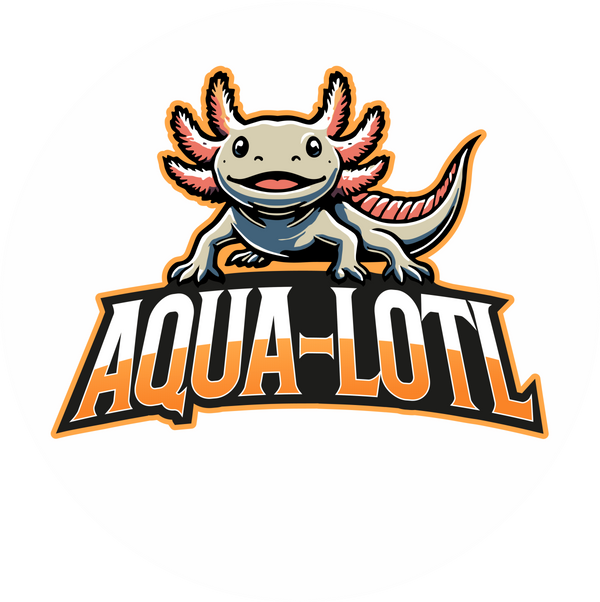How to Cycle an Axolotl Tank | Aqua-Lotl Tank Guide
Learn the nitrogen cycle and how to prepare your axolotl’s tank the right way. Step-by-step cycling instructions from Aqua-Lotl.

How to Cycle Your Axolotl Tank
Setting up a healthy tank environment is one of the most important things you can do for your axolotl. Before you add your new aquatic friend, you need to cycle your tank. This guide will explain what cycling is, why it matters, and exactly how to do it.
What Is the Nitrogen Cycle?
Your axolotl produces waste (like poop and leftover food), which breaks down into ammonia. Ammonia is extremely toxic to axolotls, even at low levels.
Fortunately, two types of beneficial bacteria can help:
One converts ammonia into nitrites (also toxic)
The other converts nitrites into nitrates (only dangerous in high amounts)
Nitrates are removed by:
Water changes (replacing old water with clean, dechlorinated tap water)
Live plants, which absorb nitrates as nutrients
This entire process is called the Nitrogen Cycle. Your tank is fully cycled when ammonia and nitrite consistently stay at 0 ppm and nitrates slowly rise.
Cycling = Growing Beneficial Bacteria
Cycling your tank means giving these helpful bacteria time to grow in your filter and surfaces before you add your axolotl. Once established, these bacteria will convert ammonia into safer forms automatically.
There are two methods:
Fish-in cycling (not recommended)
Fishless cycling (recommended — no animals harmed!)
This guide will walk you through fishless cycling.
What You Need
Seachem Prime (water conditioner)
Dr. Tim's Ammonium Chloride or unscented household ammonia
API Freshwater Master Test Kit
Before starting, test your tap water to ensure it's suitable:
pH: 7.0–8.5
Ammonia: <1 ppm
Nitrite: <1 ppm
Nitrate: <20 ppm
If your values are out of range, consider filtered water or an RODI system.
Step-by-Step Instructions
-
Set up your tank (filter running, decor added, substrate in place)
-
Dose Seachem Prime according to bottle directions to dechlorinate tap water
-
Add ammonia to raise the level to 3 ppm
-
Test after 1 hour to confirm ammonia is at 3 ppm
-
Wait 24 hours
-
Test ammonia, nitrites, and nitrates
-
If ammonia drops below 1 ppm, dose again to raise to 3 ppm
Repeat daily testing. Watch for this pattern:
Ammonia begins to drop
Nitrites appear and then begin to rise
Nitrites drop as nitrates increase
You're fully cycled when:
You dose 3 ppm of ammonia
24 hours later: ammonia and nitrites = 0 ppm
Nitrates are present (usually above 20 ppm)
Test and dose for 3 more days to confirm stability.
Until you're ready to add your axolotl, continue dosing 1 ppm ammonia per day to keep the bacteria alive.
Before Adding Your Axolotl
Do a large water change (or several) to reduce nitrates below 40 ppm (ideally <20 ppm)
Rinse your filter sponge gently in tank water to help reduce nitrates
Now you're ready!
Troubleshooting Common Problems
Problem: Ammonia > 4 ppm
Fix: Do a 50% water change to bring it down
Problem: Nitrite > 5 ppm
Fix: 50% water change; reduce ammonia dose to 2 ppm until nitrites fall
Problem: pH drops to 6.0
Fix: If your tap pH is >7.4, do a 50% water change
Alternative: Add 1 tsp baking soda per 10 gallons of water
With patience and daily testing, cycling your tank will create a safe, stable home for your axolotl to thrive!
👉 See our Blog page more in depth information →
Ready to Adopt?
Explore our hand-raised axolotls — shipped safely with a Live Arrival Guarantee. 🔗 Shop Available Axolotls →
